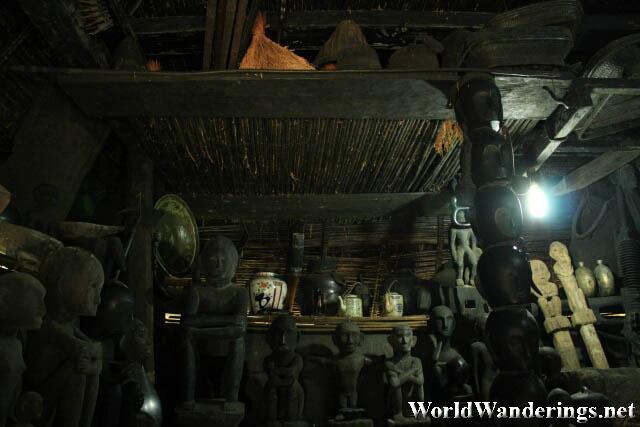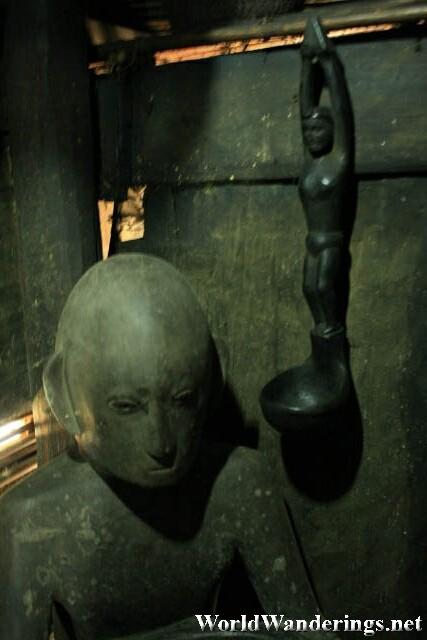The owner of the Tiwang Ethnic Village motioned us to follow him. He climbed up the Ifugao hut in the middle and asked us to follow. This was to be our introduction into the world of the Ifugao people. The hut was elevated above the ground to keep the occupants cool. It was also to avoid any pests like snakes and most insects. As for the flying ones, they have a small fire inside the wooden hut to smoke away all the insects that might want a piece of them.
Immediately, I noticed that the air was quite smokey. I guess the Ifugao people have gotten used the smell of this that the don’t mind it anymore. Inside the hut was very dark, not because of the lack of light but more because of the soot from the fire that they constantly have. Inside the hut are a huge assortment of utensils that the Ifugao people use. There were a lot of not so-authentic stuff like a wok for cooking but a lot of stuff there were quite interesting. Some of the utentils have interesting shapes like a female figure for the handle of a ladle or a hand for the handle of a wok.
And just like a hut I saw in Batad before, there were skulls of farm animals displayed outside the hut. This represents the social status of the family. The more skulls, the more important they are. It is obvious from the way they build their houses that the Ifugao really know how to live with their environment. I think it is great lesson to be learned from these people.
[xmlgm {http://www.worldwanderings.net/kml/Banaue.kmz} zoom=14]


